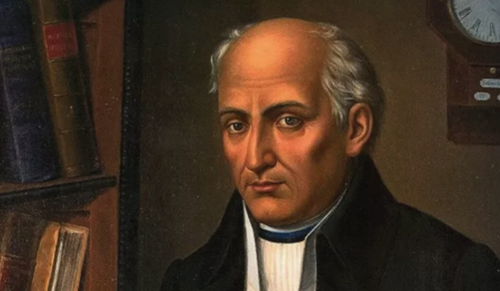

People who think of Cinco de Mayo only as an annual excuse to drink margaritas may not be aware that the date marks a significant event in Mexican history commemorating the Battle of Puebla—and not Mexican Independence Day, which is September 16.
In addition to Cinco de Mayo and Mexican Independence day, there are numerous other dates throughout the year that can be used to commemorate events and educate others about Mexican life, history, and politics. This is a list of dates as they appear on the calendar, rather than the earliest to the most recent in chronological order.
:max_bytes(150000):strip_icc():format(webp)/Ignacio_Allende-57ba28905f9b58cdfd18106a.jpg)
Ramon Perez/Wikimedia Commons/Public Domain
On January 17, 1811, a rebellious army of peasants and workers led by Father Miguel Hidalgo and Ignacio Allende fought a smaller but better equipped and better trained Spanish force at Calderon Bridge, outside of Guadalajara. The stunning defeat led to the capture and execution of Allende and Hidalgo but helped drag out Mexico's War of Independence for years.
:max_bytes(150000):strip_icc():format(webp)/Villa_close_up-57ba23c23df78c8763f4a2d4.jpg)
Bain Collection/Wikimedia Commons/Public Domain
On March 9, 1916, the legendary Mexican bandit and warlord Pancho Villa led his army across the border and attacked the town of Columbus, New Mexico, hoping to secure money and weapons. Although the raid was a failure and led to an extensive U.S.-led manhunt for Villa, it greatly increased his reputation in Mexico.
:max_bytes(150000):strip_icc():format(webp)/Francisco_Villa-57ba29053df78c8763fc7365.gif)
Archivo General de la Nación/Wikimedia Commons/Public Domain
On April 6, 1915, two titans of the Mexican Revolution collided outside of the town of Celaya. Alvaro Obregon got there first and dug himself in with his machine guns and trained infantry. Pancho Villa arrived not long after with a massive army including the best cavalry in the world at the time. Over the course of 10 days, these two fought it out and Obregon emerged the victor. Villa's loss marked the beginning of the end of his hopes for further conquest.
:max_bytes(150000):strip_icc():format(webp)/Emiliano_Zapata_en_la_ciudad_de_Cuernavaca-57ba2a445f9b58cdfd1a8483.jpg)
Mi General Zapata/Wikimedia Commons/Public Domain
On April 10, 1919, rebel leader Emiliano Zapata, who had been the moral conscience of the Mexican Revolution fighting for land and freedom for the poorest Mexicans, was betrayed and assassinated in Chinameca.
:max_bytes(150000):strip_icc():format(webp)/Porfirio_diaz-57ba23595f9b58cdfd1049d1.jpg)
Aurelio Escobar Castellanos/Wikimedia Commons/Public Domain
The famous "Cinco de Mayo" celebrates an unlikely victory by Mexican forces over French invaders in 1862. The French, who had sent an army to Mexico to collect on a debt, were advancing on the city of Puebla. The French army was massive and well-trained, but heroic Mexicans—led in part by a dashing young General named Porfirio Diaz—stopped them in their tracks.
:max_bytes(150000):strip_icc():format(webp)/Alvarado-57ba2bfb3df78c8763ff5ace.jpeg)
Unknown/Wikimedia Commons/Public Domain
In May of 1520, Spanish conquistadors had a tentative hold on Tenochtitlan, now called Mexico City. On May 20, Aztec nobles asked Pedro de Alvarado for permission to hold a traditional festival, which he granted. According to Alvarado, the Aztecs were planning a rebellion, and according to the Aztecs, Alvarado and his men simply wanted the golden jewelry they were wearing. In any case, Alvarado ordered his men to attack the festival, resulting in the slaughter of hundreds of unarmed Aztec nobles.
:max_bytes(150000):strip_icc():format(webp)/Huerta_y_Orozco-57ba2c5b5f9b58cdfd1baba7.jpg)
Unknown/Wikimedia Commons/Public Domain
Surrounded by angry warlords, Mexican usurper President Victoriano Huerta sends his best troops to defend the city and railway junction at Zacatecas in a desperate effort to keep rebels out of the city. Ignoring orders from self-appointed rebel leader Venustiano Carranza, Pancho Villa attacks the town. Villa's resounding victory cleared the path to Mexico City and begins the downfall of Huerta.
:max_bytes(150000):strip_icc():format(webp)/Francisco_Villa_Raul_Madero-57ba2cfa5f9b58cdfd1bb7e7.jpg)
Ruiz/Wikimedia Commons/Public Domain
On July 20, 1923, legendary bandit warlord Pancho Villa was gunned down in the town of Parral. He had survived the Mexican Revolution and had been living quietly at his ranch. Even now, almost a century later, questions linger over who killed him and why.
:max_bytes(150000):strip_icc():format(webp)/Miguel_Hidalgo_y_Costilla-57ba21e73df78c8763f1e465.png)
Anonymous/Wikimedia Commons/Public Domain
On September 16, 1810, Father Miguel Hidalgo took to the pulpit in the town of Dolores and announced that he was taking up arms against the hated Spanish—and invited his congregation to join him. His army swelled to hundreds, then thousands, and would carry this unlikely rebel to the gates of Mexico City itself. Ths "Cry of Dolores" marks Mexico's Independence Day.
:max_bytes(150000):strip_icc():format(webp)/Miguel_Hidalgo_con_estandarte-57ba2d815f9b58cdfd1bbd38.jpg)
Antonio Fabres/Wikimedia Commons/Public Domain
Father Miguel Hidalgo's rag-tag rebel army was moving towards Mexico City, and the city of Guanajuato would be their first stop. Spanish soldiers and citizens barricaded themselves inside the massive royal granary. Although they defended themselves valiantly, Hidalgo's mob was too large, and when the granary was breached, the slaughter began.
:max_bytes(150000):strip_icc():format(webp)/L-exe-rcit_al_carrer_30_de_juliol-57ba2e273df78c8763ff7763.jpg)
Marcel·li Perelló/Wikimedia Commons/Public Domain
On October 2, 1968, thousands of Mexican civilians and students gathered in The Plaza of the Three Cultures in the district of Tlatelolco to protest repressive government policies. Inexplicably, security forces opened fire on the unarmed protestors, resulting in the death of hundreds of civilians, marking one of the lowest points in recent Mexican history.
:max_bytes(150000):strip_icc():format(webp)/Olympic_Summer_Games_1968_Opening-57ba2ecb3df78c8763ff7c1d.jpg)
Sergio Rodriguez/Wikimedia Commons/Creative Commons 3.0
Not long after the tragic Tlatelolco Massacre, Mexico hosted the 1968 Summer Olympics. These games would be remembered for Czechoslovakian gymnast Věra Čáslavská being robbed of gold medals by Soviet judges, Bob Beamon's record long jump, and American athletes giving the Black power salute.
:max_bytes(150000):strip_icc():format(webp)/Ignacio_Allende-57ba28905f9b58cdfd18106a.jpg)
Ramon Perez/Wikimedia Commons/Public Domain
As Miguel Hidalgo, Ignacio Allende and their rebel army marched on Mexico City, Spanish in the capital were terrified. Spanish Viceroy Francisco Xavier Venegas rounded up all available soldiers and sent them to delay the rebels as best they could. The two armies clashed at Monte de Las Cruces on October 30, and it was another resounding victory for the rebels.
